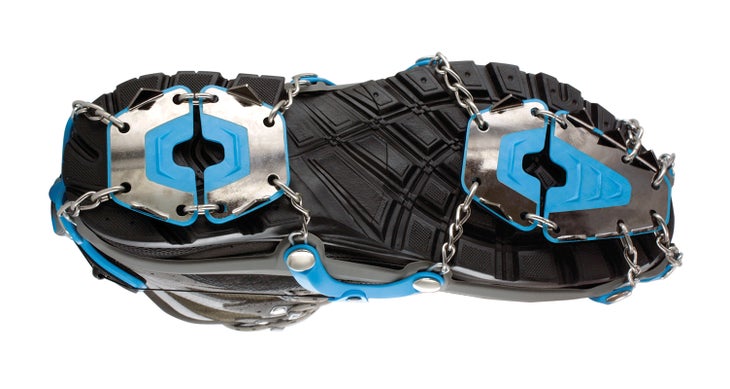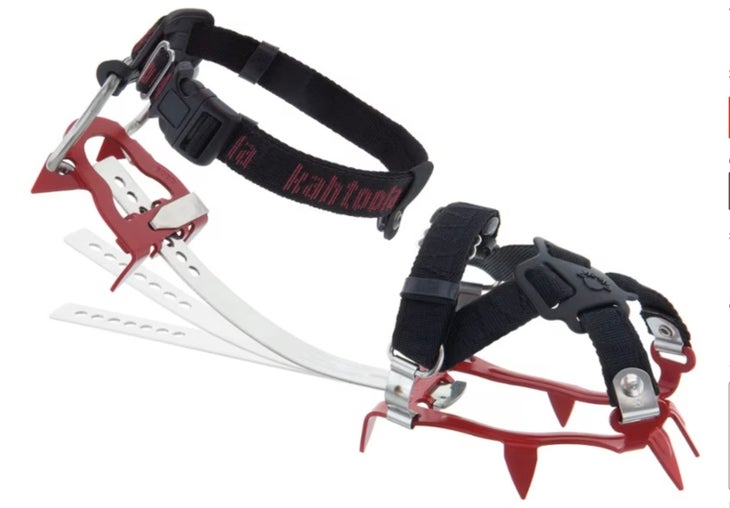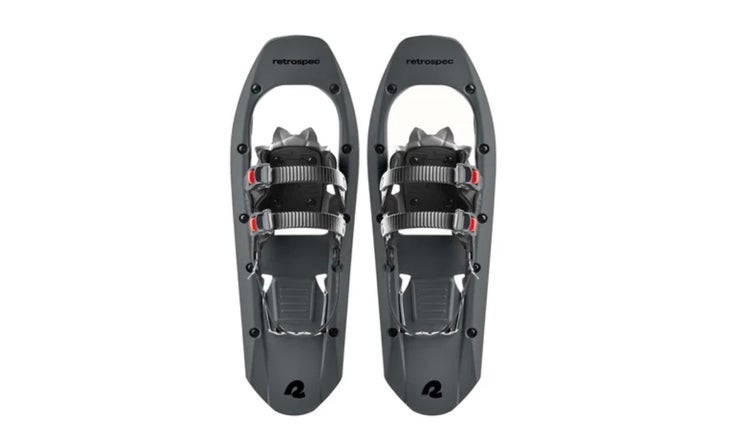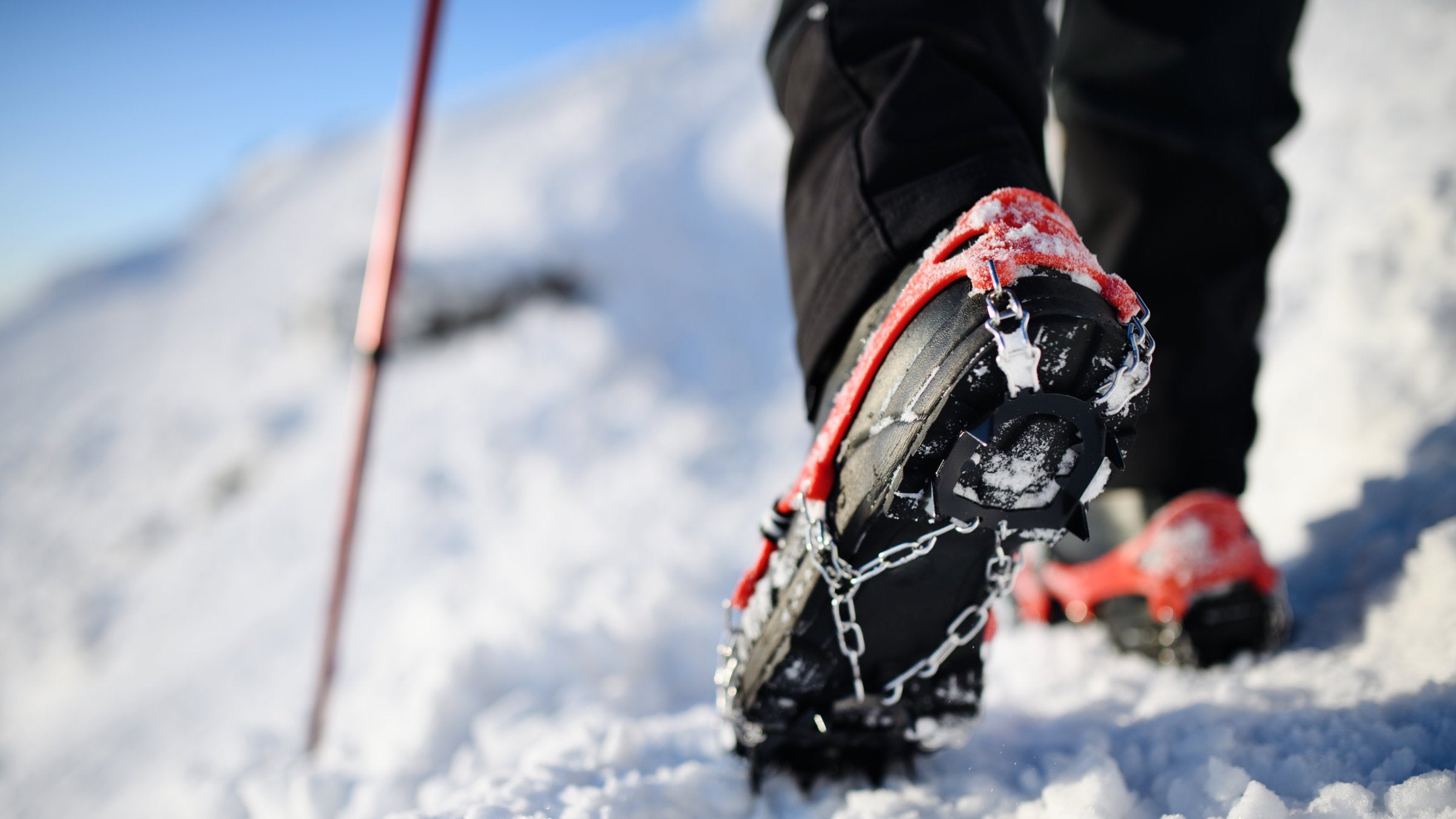Next to not bringing enough warm enough layers and forgetting to check the weather, hitting the trail without appropriate traction is among . It’s one that’s easy to miss until it’s too late, too: Trails that climb from lower elevations may be bare at the beginning but covered in heavy snow and boilerplate ice higher up. Even if your hike doesn’t end in disaster, having to carefully edge your way down a slippery trail instead of stepping with confidence can cost you time, leading you to get to camp or your car later than you had planned. Here’s why you need traction, and .
How Hiking Traction Works
Grab a pair of your street shoes and a pair of your hiking shoes and . Compared to your casual footwear, your trail runners or boots have a toothier, more rugged-looking sole. Hiking traction—such as ice cleats, crampons, and snowshoes—takes that to an extreme: By concentrating your body weight into a small area, their points penetrate into and grip hard snow and ice in a way that your footwear alone can’t, and provide multidirectional grip rather than skating off the surface. Which specific kind of traction you need depends on the conditions you plan on hiking in.

Ice Cleats
Better known as Microspikes (technically a trademark for Kahtoola’s version of them), these diminutive points are smaller and generally more flexible than crampons. They feature a set of small steel or tungsten carbide points, mounted on either a chain or rubber structure that fits snugly around your footwear. Ice cleats are great for general use in winter; they’re usually enough for everything but steep, mountaineering-adjacent routes in the mountains.
are a good middle-of-the-road solution that can handle a wide variety of conditions, with twelve ⅜-inch spikes per foot and a secure elastomer upper. The , which features a Boa system for dialing in fit, is another option.

Crampons
For the most extreme routes that involve long, steep alpine ascents or the potential for high-consequence falls, you may want something a little toothier than ice cleats. That’s where crampons come in. These clawlike steel spikes come in a variety of flavors; for hiking and light mountaineering, you’ll want a pair of strap-on 10-point crampons—not one of the heavier-duty (and just plain heavier) models intended for ice climbing. Unless you know you’ll be hiking strictly on snow, resist the urge to get aluminum crampons, which are lighter but will dull or even break quickly on rocky terrain.
feature chromoly steel spikes, an independent rear, and toe bindings that work with just about any boot or shoe and feature a fold-flat heel support so they take up as little pack space as possible. At just under a pound and a half per pair, they’re relatively light for the category, too.

Snowshoes
If you’ll be negotiating deep snow as well as hardpack, a pair of snowshoes that’s built for mountain use can be a good option; just keep in mind that they’ll be clumsy and not especially useful on variable or rocky terrain. Look for a pair with teeth along the frame as well as at the toes, sturdy construction, and a heel lifter, which will help your calves from wearing out on long climbs.
were a favorite of our snowshoe testers this year. More than 70 steel teeth along the frame and seven at the toe provided reliable grip even on icy sections, and ratchet straps on the upper foot kept our tester’s footwear from slipping and sliding during testing in Montana.


